Pete Sutton's Blog, page 34
April 8, 2015
29th ARTHUR C. CLARKE AWARD SHORTLIST ANNOUNCED

The six shortlisted books for the Arthur C. Clarke Award for best science fiction novel of the year published in 2014 are:
The Girl With All The Gifts - M.R. Carey (Orbit)
The Book Of Strange New Things - Michel Faber (Canongate)
Europe In Autumn - Dave Hutchinson (Solaris)
Memory Of Water - Emmi Itäranta (HarperVoyager)
The First Fifteen Lives Of Harry August - Claire North (Orbit)
Station Eleven - Emily St John Mandel (Picador)
The 6 shortlisted titles were selected from a list of 107 individual eligible submissions, put forward by 36 different publishing houses and imprints.
Glad to say the BRSBKBLOG has read & reviewed several of these. Our Money is on Mike Carey's amazing "The girl with all the gifts" with Dave Hutchison's "Europe in Autumn" as our second favourite. Congratulations to all the shorlisted authors!
The winner will be announced on Wednesday 6th May at an exclusive award ceremony held at Foyles Bookshop, London, and taking place as part of the activities leading up to the SCI-FI-LONDON Film Festival.
Award Director Tom Hunter said:
“This is a quintessentially Clarke Award kind of a shortlist of exactly the sort that we've become known for over the years and always love to celebrate. Congratulations to all of our shortlisted authors, their publishing teams and, of course, a big thank you to everyone on our judging panel this year.
“We've got six authors who have never been nominated for the Clarke Award before and while the subject matter may often be dark, when we think about what this list says about the strength of science fiction literature itself, I see a future that's full of confidence, creativity and diversity of imagination.”
Addressing recent issues around diversity and the overt politicising of genre awards, he added:
“Diversity in science fiction is the big topic right now, and rightly so, and the Clarke Award is as much a part of that conversation as any other award.
“Diversity for us means starting with as broad a range of voices and books as possible so we can pick a shortlist that we think really is the best of science fiction literature.
“Awards should stimulate debate. Their choices should provoke a response, and that often means strong debate will be generated as a result, but an award actively seeking controversy is really missing the point and that goes double for any group seeking to artificially create controversy around an award for its own ends. In other words, it's not a battle of competing ideologies - left versus right - it's a simpler matter of constructive versus destructive attitudes.
“A good shortlist isn't a statement about what you should like, it's an invitation to go beyond the limits of what you already know so you can experience and enjoy something new. Why limit an appreciation of a literature that's built on the power of human imagination?”
Published on April 08, 2015 01:03
April 1, 2015
Interview with Claire M Hutt - Illustrator of North by Southwest

C M Hutt is a mature student studying Drawing and Print at the University of the West of England. She co-edited a zine called Full Frontal Lobe where she published her first illustration, 'Inner Workings of a Ray Gun', and her short story 'Verne's Rise'. She has also had an illustration in an anthology called 'Felinity' for the short story 'No Tears'.
Her work can be found at www.cmhutt.com, on facebook at C M Hutt Art or on Twitter @clairedreams99.
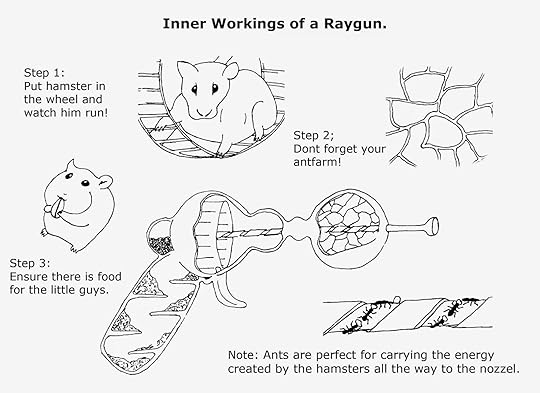
Claire made the wonderful art in the anthology North by Southwest
I know you as an artist, where you did the rather marvellous pictures for North by Southwest, but you’ve had words published too. Can you tell us a bit about that?
A friend and myself were talking about how difficult it was to sell work and be seen. We had no idea how to go about it but we decided to make a zine to showcase our work and the work of our friends. We called it Full Frontal Lobe. I had an illustration (inner workings of a ray gun) and a short story (Verse's Rise) published in that.
Skirting perilously close to ‘where do you get your ideas’ but how do you go about coming up with an illustration for a story or a book?
Ideas for any art we do come from a lifetime of experiences and the things we see in our everyday lives, but to illustrate someone else's story is a little different. For NbySW I had to read the stories and think of an image to go with them as I was given free reign. Some were easy, like Christmas Steps, some were really difficult, like Lye Close. I had to think about what was important to the story without giving it all away. I did some research for each, took photos, sketched ideas, etc, until they were done.
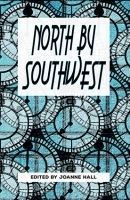
Do you find restrictions on what you can draw a help or a hindrance? For example if someone tells you exactly what they want and don’t want for an illustration
Both. I think a happy medium of input and freedom is the best mix for me. At university we are given a lot of freedom, which is wonderful, but can often overwhelm me as I don't have any restrictions. Far too many ideas, never enough time. NbySW was good for me as I had the freedom to get on with it but I also had the restrictions of time, theme and story.
North by Southwest if your first fully illustrated book – what did you learn about art by doing the art for the book?
Never have an equal amount of black and white on the cover image, it plays havoc with the text. I also realised I need to plan my projects and my time better. I've already improved my time management for university by mapping out what needs to be done and when. It taught me a lot about doing art for other people and has given me a huge amount of new experiences.

You’ve used models in some of the pictures, can you tell us a little about that sort of process?
When using models you need to be careful. Get them to sign a model release form which you can download for free. ( http://www.entrepreneur.com/formnet/form/848). If you intend on publishing or making money from their image you need their permission and to agree a form of payment (if any). I used my husband and sister-in-law but still got them to sign release forms.
I think all the writers in the book have their favourites of the pictures (and there are differences), do you have a favourite, if so what is it?
I love abstracts, so when I read Kevlin Henney's Like Giants I knew what to do. I love the story and the image, it was fun to do and makes me smile. Christmas Steps is a close second.

You are currently doing a degree, what do you say to the people, like some of the people currently in government, that art degrees are not value for money?
I'm always being asked what kind of job I could possibly get from art and I'd like to point out to them that architects are artists, and an architect designed the houses of parliament. Graphic designers are artists who designed their logos. Game designers are artists, fashion designers are artists, photographers are artists. Art surrounds us and without it we are nothing.
What can writers do better to help illustrators who are working on their stories?
Feedback. Positive or negative it doesn't matter as long as it's constructive. We want to bring your words to life and any help you can give us is vital.
Do you have a set process for creating art, if so what is it? If not why not?
Ideas usually come to me when my mind is clear, like when I'm about to go to sleep or relaxing to music, reading a book, etc. Other than that I don't have a fixed process yet but uni is teaching me the importance of research and the need for sketchbooks.
In one sentence what is your best piece of advice for new artists?
Confidence in yourself and your work is the most important tool you can have.

Published on April 01, 2015 02:37
March 30, 2015
Guest post from Stephen Blake

Stephen Blake lives in a small seaside town in Cornwall where he plans, plots, exaggerates and occasionally writes. He’s had his work published in the anthologies ‘Airship Shape & Bristol Fashion’ and ‘Avast, Yes Airships!’ He is a regular contributor to ‘Far Horizons’ e-magazine. This summer he will have a number of stories published in the children’s anthology, ‘The Adventures of Dayton Barnes’.
He can be found on twitter as @UncannyBlake, on his blog www.stephenblakesblog.comand on Facebook www.facebook.com/stephenblakeauthor.Steve has dropped in to talk about the different words we use...
The words we use
I’ve been fortunate recently to have had a few submissions accepted for anthologies. The difference to previous acceptances is that these ones have been accepted by American editors.
It is fascinating to me how differently we use the same language – English.
For ‘Avast, Ye Airships’ I set my story in Victorian England. My editor had me change the spellings; favourite is favorite, honour is honor, harbour is harbor, etc, etc.
No problem so far. The one that surprised me was a part of the story where I describe a sword fight. I used the phrase, ‘a swathe of his blade’. My American editor told me she’d never heard of the word and had had to look it up. She was certain the American audience would never have heard of the word either. So ‘swathe’ became ‘slash’ and eventually I re-wrote the whole scene anyway.
I was really quite surprised by this. I’m not one to use words to feel intellectually superior to someone. I don’t want a reader to have to reach for the dictionary whilst reading one of my stories. But still, ‘swathe’ - it isn’t that kind of word is it?
I started working on stories for a children’s anthology. ‘The Adventures of Dayton Barnes’. The idea was to encourage young American boys to pick up a book and read. In a very helpful move the editor has set out a series of restrictions on what is effectively a shared world. Added to that, she listed some phrases the main character will use. I’m fine with ‘Yep’, ‘Nope’, even ‘Well blow me over’, whilst seeming forced it is still okay. However, for the life of me, I have difficulty typing, ‘Y’all’. It’s not something I ever hear anyone say and if I did I’d assume they were taking the mickey.
This got me thinking further about words we speak locally. I’m from Cornwall. It’s not just for the tourists but we really do say, ‘Dreckly’ (directly). It really is the answer you give when someone asks how long you are going to be or when something will be finished.
Whilst at a B & B on the Isles of Scilly one 5am I was asked by one of my fellow marathon runners how I was. “Tired,” I said, “but doing my best not to be teasy.” I thought nothing of it but she laughed heartily, telling me she only ever heard that word when she came to Cornwall. I was really surprised. I assumed the whole world used the word ‘teasy’ when describing someone who was a bit agitated or irritable. We even sometimes use the word ‘scratchy’ instead.
I know that when I wrote a story for Airshp Shape & Bristol Fashion I tried to put some ‘Bristolian’ language in there (Brizzle) but decided against it for fear of getting it very wrong.
So this is certainly not an Anglo-American issue. It permeates throughout the British Isles. Is there a word that is said in your area or country that would mean nothing to the rest of the English speaking world? And isn’t it tempting to squeeze it in a story and try and make it a part of everyday speech for everyone?
Published on March 30, 2015 01:26
March 25, 2015
Interview with Ian Whates & review of Pelquin's Comet

Ian Whates lives in a quiet Cambridgeshire village with his partner, Helen, and Honey, a manic cocker spaniel. Ian is the author of six novels to date, most recently Pelquin’s Comet, released in April 2015. Also, the Helen, a manic cocker spaniel, and a tailless black cat. He City of 100 Rowstrilogy (Angry Robot), and the Noise duology (Solaris). Sixty-odd of his short stories have appeared in various venues, two of which were shortlisted for BSFA Awards, and his second collection Growing Pains (PS Publishing) appeared in 2013. Ian has edited some two dozen anthologies and in 2014 one of these, Solaris Rising 2, was shortlisted for the Philip K. Dick Award. He has served a term as Overseas Director of SFWA and spent five years as chairman the BSFA, stepping down in 2013. In his spare time Ian runs multiple award-winning independent publisher NewCon Press, which he founded by accident in 2006.
Ian dropped by to talk about his latest book - Pelquin's Comet. His interview & a review of the book below:
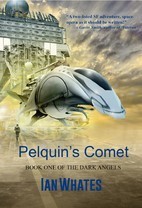
This is the first in a trilogy I believe – can you give us an overview of what they’re about?
I’ll try to do so without giving too much away… The books are set in an age of expansion, with humanity spreading out into the stars aided by caches of ancient alien technology which they don’t fully understand. Humanity has encountered its first extant alien culture, the Xters, and the two races eye each other warily across ragged and fairly arbitrary borders, not really competing for habitat due to physiological differences, but not trusting each other either. This first book centres on the crew of a small independent trading ship, Pelquin’s Comet, who have a lead on a cache of Elder tech that they hope will make them rich. In order to fund an expedition to recover it, they take a loan from a bank. The bank insists that their agent, Drake, accompanies them to safeguard the bank’s interests.
They are not the only parties after the cache and soon find themselves in a deadly race to reach it first.
Drake provides the over-riding story arc. He has a hidden past, one that comes back to haunt him as the series progresses, starting in this first book, as he encounters familiar faces and places he never expected to see again. He also has a companion, a small cuddly bundle of fur called Mudball whom everyone assumes to be a pet but is actually an alien entity with an agenda all its own. As the series progresses, the secrets multiply, Drake’s past comes ever more to the fore, the true nature of the Elder caches is revealed, and the future of humanity itself hangs in the balance as a result.
I’d say this was carefully plotted, how much planning did you do?
Thank you, I’m glad it comes across that way. In all honesty, not as much as you might think. I tend to write in an organic fashion, generally setting out with a loose plot in mind and seeing where my characters take me – which often proves to be in directions even I hadn’t anticipated. This book is no exception. I had the four central characters – Drake, Pelquin, Mudball, and Leesa – fairly well established in my head and knew where I wanted to take them by the end of the book. Beyond that, many of the plots and twists that actually brought them there developed while the writing was well underway. One of the earliest chapters to be written was the one exploring Leesa’s childhood on the strange colony world, her sense of not belonging and her first encounter with an Xter. This proved useful as it gave me a solid grounding for writing Leesa as a damaged adult.
If you could be a character in the book who would it be and why?
Drake. He’s the one with a hidden past, the one in a position of authority, and he’s the one for whom life is about to get even more interesting and dangerous as the series evolves. Because of his hidden past, he’s very in control, guarded, careful not to reveal too much about himself… and then Leesa turns up. I enjoyed exploring his reaction to her and the threat she represents. I also envy his analytical mind, which comes to the fore when the ship is impounded by port authorities, bringing a touch of the Sherlock Holmes to his character. Wouldn’t it be lovely to make connections and piece situations together with such clarity?
What did you learn about writing by writing this book?
The importance of patience and revisiting your work after a ‘fallow’ period. In all honesty this is nothing new – all writers know the wisdom of setting your work aside for a while and coming back to it with fresh eyes, but it isn’t something I’ve always put into practice. I did here, and Pelquins Comet is the most revised text I’ve yet written.
When will the other two books come out?
Good question. I’ve started volume 2 but have had to set it aside for now while I concentrate on something else. The plan is to return to it shortly and I’d hope to have the book out by next year, with volume 3 in 2017, but we’ll see.
You’ve mentioned that there is a nod to Firefly here, which in itself was a nod to Blakes 7. What is it about the ensemble cast in a small vessel playing fast and loose with the law that inspired you?
A group of rogues operating at the very edge of legality and a little beyond but possessing their own moral code that we can all recognise… The situation offers such opportunity for drama. The simple introduction of a stranger is enough to disrupt the established dynamic. Throw in a quest, a threat or two, a mystery or three, and a twist or four, and away we go. What’s not to love?
Why did you choose to have a banker as one of your main characters?
I did so for a number of reasons; in part because it seemed such a perverse notion but also entirely logical. If a financial institution is about to entrust a large sum of money to strangers, they would want safeguards, a representative on the mission. It also gave me the perfect opportunity to play around with a situation that’s always intrigued me, that of a close-knit group having an outsider forced upon them. All sorts of dynamics come into play as a result – the resentment of Nate towards the banker, the uneasy clash of authority between Drake and Pelquin among them. Besides, I can’t think offhand of an SF adventure series that’s featured a banker as central character before…
How much input did you have into the cover art?
In some senses quite a bit, in others not a lot. To explain, I trust Jim Burns and have worked with him before. At outset I sent Jim a couple of snippets from the text that described the ship, Pelquin’s Comet, and left the rest to him. Not sure what I would have done had I hated what he came up with, but fortunately I absolutely loved it. Jim really delivered. To be honest, it never occurred to me that he wouldn’t.
It felt like you’d had a great deal of fun writing this, what did you enjoy the most about writing this book?
I did have a lot of fun, you’re right. I loved creating the different societies – from the hi-tech fast-paced banking capital of New Sparta, to the knock-off gang-infested world of Babylon, from the superficially civilised Brannan’s World to the Xter-dominated frontier world of Leesa’s childhood, Liaise. I loved the interplay between the characters and the wealth of secrets hidden by so many of them. I loved writing the wise-cracking Mudball and hinting at his real intentions, and I loved thinking up the different wonders found in the cache chamber and writing the action sequence that occurs towards the book’s finale… Most of all, I think I enjoyed taking established SF tropes such as alien caches bootstrapping humanity to the stars and turning them on their heads. Yes, I really have had fun writing this one, and look forward to continuing the story.
In one sentence what’s your second best piece of advice for writers? (since I have your first best in the last interview)
Hey, that’s unfair, I cheated last time and actually gave you two because I couldn’t choose between them (don’t take rejection personally and join a writers’ group). Okay, something new… Write short stories. Even if your real ambition and focus is the novel, you’ll gain so much from mastering the shorter form – in a short story you have to establish character and setting in a few deft sentences as opposed to doing so over the course of chapters – that sort of discipline, that ability to make very word count, will stand you in good stead whatever you then go on to write.
Many thanks to Ian for taking the time to providing answers
The BRSBKBLOG review:
Take an ensemble cast in a Fireflyesque small trading ship, add a dash of secret backgrounds, a banker, an alien and a treasure cache. Stir gently with memorable characters and locations. Add a dash of wisecracking language and what you end up with is a highly entertaining space opera. Mr Whates obviously had a great deal of fun whilst writing this and it's bound to rub off on you when you read it. It left me wanting more, which is the point of a first in a series isn't it?
I wanted more of the mysterious aliens that left behind a treasure cache and note that there is the promise of revelations in the future with keen anticipation. The universe building is deftly done and this is a tightly plotted book. My only, very minor, grumble was with the treasure cache itself. I would have liked to have seen more made of it, both in the heist part itself and in the possibilities of the treasures.
Really looking forward to the next one!
Overall - Highly entertaining space opera.
Published on March 25, 2015 07:05
March 23, 2015
Dylan Peters - 5 things I learned from self-publishing the Everflame series
5 THINGS I LEARNED FROM SELF-PUBLISHING THE EVERFLAME SERIES
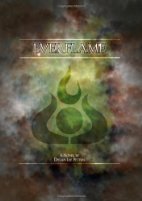
You must figure things out on your own
So, you have a manuscript, now what? Well, the truth is that unless you have a lot of financial backing, then you’d better learn to become a jack-of-all-trades. When I started trying to figure out what I was going to do with the first Everflame book in 2009, I had no money. I was working a minimum-wage job while going to school to get a degree in graphic design. I had to use the resources that were available to me. So, I used a graphic design program, Adobe InDesign, to layout Everflame, and then made it available at Lulu.com, a print-on-demand website. Lulu.com was free to use, and they only charge you once you order a book. (Note from Captain Obvious: ordering one book is monumentally cheaper than paying a publisher to print a run.) Now, I was lucky that I had a great program like InDesign available to me, but I had to learn how to use it. It took long hours and persistence. Most computers have a program you can use to layout text. It’s up to you to master that program, as well as any other program or resource you may need for help. When I wanted to convert Everflameto ebook, I had to learn to do it myself and find a cheap resource to do so. Professional editing of a book costs roughly $2,000. I had to improve my editing skills and resubmit versions of Everflameas I improved. The list continues, and you have to be willing to do research to figure out how to fix your problems and get what you want. Being a self-published author is a fight, and the more you can do, the stronger you will ultimately be.
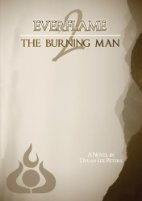
Getting reviews is the key
The best thing you can have going for your book is a list of good reviews, so spend time figuring out how you can get those reviews. Reviews are the first thing a reader will look for before they will take a chance on your book. If you don’t have any reviews, no one will take that chance. Here is a dirty little secret for you: When I first released Everflame, and had no reviews, I created my own reviews and posted them as other people. I had friends and family post reviews. I created online profiles of people that didn’t exist and used those profiles to review Everflame. Was it underhanded? Yes. Did it work? Absolutely.
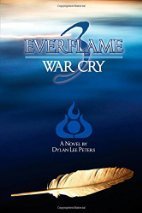
You’d better have some thick skin
“This reads like a fourth grader's first creative writing assignment.”Yup, that is an actual quote from an actual reader. Another reviewer wrote that Everflame was literally the worst book they had ever read. (Isn’t that wonderful?) In the end, you have to remember that you can’t please everyone, and some people are just vicious. You take the criticism, and work to get better. I’m sure those are not the last scathing reviews I’ll receive, but each one makes me all the more grateful for the glowing reviews I do get, as well as grateful for the fact that my good reviews far outweigh my negative reviews.

Get comfortable with promotion
When I was starting out, I advertised Everflame on Craigslist, under the “free” section. It was completely against the policy of the website, and the ad was taken down soon after, but I received a lot of downloads from it. In fact, I spent a lot of time that year finding places that I could post about Everflame online. I joined online fantasy communities just to talk about Everflame, and I filled out every free book listing I could find. I sent bookmarks to local bookstores. I did anything and everything I could think of that was within my meager budget. To this day, promotion is something I’m constantly looking to improve upon. My most recent ideas have been contests to promote fan interaction and I’ve also tried creating Everflame-themed internet memes. (You never know what might end up going viral).
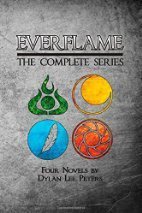
Never give up and never stop improving
All told, the number one thing that self-publishing has taught me is that you can never give up. You never know when or where your break might come, but you’d better be ready for it, and willing to fight for it. I love writing, and because I have that love I know I will continue to work at and improve my craft. If you love writing, and have considered self-publishing your work, I’ll leave you with words from Densa at the end of Everflame 4: As the Darkness Waits:
I go forth with my love, knowing nothing can stop me now.
Find out more about Dylan Lee Peters at his webiste www.dylanleepeters.com, or download Everflame from kindle, http://www.amazon.com/Everflame-Dylan-Peters-ebook/dp/B008QZMX7E
The world is old and full of lies,But also full of truth,And here between the earth and sky the questions fall to you.
Long ago, when the earth was young, four ancient beings created man to be the bastion of the earth and its creatures, but when the Great Tyrant came and chased the Ancients away, the world was transformed into a place of fear and isolation. Over time, humans lost their connection with a world they had been created to protect, they forgot the ways of their ancient creators, and accepted the Tyrant’s lies as truths from the mouth of a god. Now, deep in the forests that surround Gray Mountain, two bears find a small child that is abandoned and left for dead. The bears name him Evercloud, raise him as a member of their kingdom, and teach the boy of the Ancients, all underneath the light of the Everflame, the flame that burns atop Gray Mountain as a monument to the integrity and spirit of the bears. As Evercloud grows, rumors reach the bear kingdom of the Ancients’ return, and now the young man must leave his home to find them, and help save the world he holds dear. Will Evercloud lose himself in the darkness of the Great Tyrant’s lies, or will he have the courage to judge his own heart, the strength to master the darkness, and the faith to follow his purpose until it burns within his heart like the Everflame?

You must figure things out on your own
So, you have a manuscript, now what? Well, the truth is that unless you have a lot of financial backing, then you’d better learn to become a jack-of-all-trades. When I started trying to figure out what I was going to do with the first Everflame book in 2009, I had no money. I was working a minimum-wage job while going to school to get a degree in graphic design. I had to use the resources that were available to me. So, I used a graphic design program, Adobe InDesign, to layout Everflame, and then made it available at Lulu.com, a print-on-demand website. Lulu.com was free to use, and they only charge you once you order a book. (Note from Captain Obvious: ordering one book is monumentally cheaper than paying a publisher to print a run.) Now, I was lucky that I had a great program like InDesign available to me, but I had to learn how to use it. It took long hours and persistence. Most computers have a program you can use to layout text. It’s up to you to master that program, as well as any other program or resource you may need for help. When I wanted to convert Everflameto ebook, I had to learn to do it myself and find a cheap resource to do so. Professional editing of a book costs roughly $2,000. I had to improve my editing skills and resubmit versions of Everflameas I improved. The list continues, and you have to be willing to do research to figure out how to fix your problems and get what you want. Being a self-published author is a fight, and the more you can do, the stronger you will ultimately be.

Getting reviews is the key
The best thing you can have going for your book is a list of good reviews, so spend time figuring out how you can get those reviews. Reviews are the first thing a reader will look for before they will take a chance on your book. If you don’t have any reviews, no one will take that chance. Here is a dirty little secret for you: When I first released Everflame, and had no reviews, I created my own reviews and posted them as other people. I had friends and family post reviews. I created online profiles of people that didn’t exist and used those profiles to review Everflame. Was it underhanded? Yes. Did it work? Absolutely.

You’d better have some thick skin
“This reads like a fourth grader's first creative writing assignment.”Yup, that is an actual quote from an actual reader. Another reviewer wrote that Everflame was literally the worst book they had ever read. (Isn’t that wonderful?) In the end, you have to remember that you can’t please everyone, and some people are just vicious. You take the criticism, and work to get better. I’m sure those are not the last scathing reviews I’ll receive, but each one makes me all the more grateful for the glowing reviews I do get, as well as grateful for the fact that my good reviews far outweigh my negative reviews.

Get comfortable with promotion
When I was starting out, I advertised Everflame on Craigslist, under the “free” section. It was completely against the policy of the website, and the ad was taken down soon after, but I received a lot of downloads from it. In fact, I spent a lot of time that year finding places that I could post about Everflame online. I joined online fantasy communities just to talk about Everflame, and I filled out every free book listing I could find. I sent bookmarks to local bookstores. I did anything and everything I could think of that was within my meager budget. To this day, promotion is something I’m constantly looking to improve upon. My most recent ideas have been contests to promote fan interaction and I’ve also tried creating Everflame-themed internet memes. (You never know what might end up going viral).

Never give up and never stop improving
All told, the number one thing that self-publishing has taught me is that you can never give up. You never know when or where your break might come, but you’d better be ready for it, and willing to fight for it. I love writing, and because I have that love I know I will continue to work at and improve my craft. If you love writing, and have considered self-publishing your work, I’ll leave you with words from Densa at the end of Everflame 4: As the Darkness Waits:
I go forth with my love, knowing nothing can stop me now.
Find out more about Dylan Lee Peters at his webiste www.dylanleepeters.com, or download Everflame from kindle, http://www.amazon.com/Everflame-Dylan-Peters-ebook/dp/B008QZMX7E
The world is old and full of lies,But also full of truth,And here between the earth and sky the questions fall to you.
Long ago, when the earth was young, four ancient beings created man to be the bastion of the earth and its creatures, but when the Great Tyrant came and chased the Ancients away, the world was transformed into a place of fear and isolation. Over time, humans lost their connection with a world they had been created to protect, they forgot the ways of their ancient creators, and accepted the Tyrant’s lies as truths from the mouth of a god. Now, deep in the forests that surround Gray Mountain, two bears find a small child that is abandoned and left for dead. The bears name him Evercloud, raise him as a member of their kingdom, and teach the boy of the Ancients, all underneath the light of the Everflame, the flame that burns atop Gray Mountain as a monument to the integrity and spirit of the bears. As Evercloud grows, rumors reach the bear kingdom of the Ancients’ return, and now the young man must leave his home to find them, and help save the world he holds dear. Will Evercloud lose himself in the darkness of the Great Tyrant’s lies, or will he have the courage to judge his own heart, the strength to master the darkness, and the faith to follow his purpose until it burns within his heart like the Everflame?
Published on March 23, 2015 01:49
March 19, 2015
Interview with Frances Hardinge
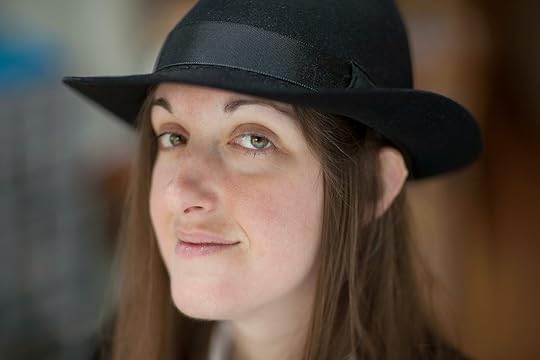
Frances Hardinge was brought up in a sequence of small, sinister English villages, and spent a number of formative years living in a Gothic-looking, mouse-infested hilltop house in Kent. She studied English Language and Literature at Oxford, fell in love with the city's crazed archaic beauty, and lived there for many years.
Whilst working full time as a technical author for a software company she started writing her first children's novel, Fly by Night, and was with difficulty persuaded by a good friend to submit the manuscript to Macmillan. Fly by Night went on to win the Branford Boase Award, and was also shortlisted for the Guardian Children's Fiction Award. Her subsequent books, Verdigris Deep, Gullstruck Island, Twilight Robbery, A Face Like Glass and Cuckoo Song are also aimed at children and young adults. Her seventh book, The Lie Tree, is coming out in May.
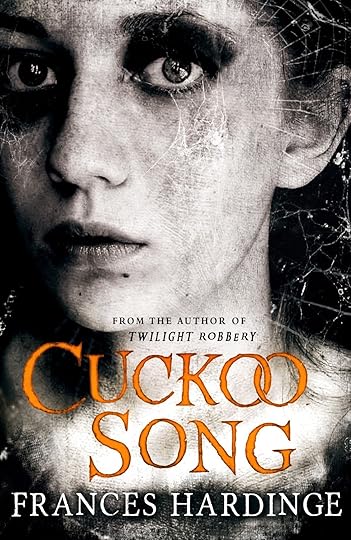
When you first tell people you’re an author how do you describe your books?
My one line summary is "very strange children's books". Since nobody seems quite sure whether I'm middle grade or YA, I describe them as "for age 10 plus, but in some cases quite a lot of plus." When I start explaining what my books are actually about, the other person's expression of polite interest generally starts to seep into panic.
What are you currently working on (apart from this interview of course!)? Tell us a bit about the book coming later this year.
My next book is The Lie Tree, which is set in 1868, and follows the attempts of fourteen-year-old Faith to investigate her naturalist father's mysterious death. It's a tale involving murder, revenge, postmortem photography, paleontology, gender, deception and an eerie plant that may or may not be supernatural.
Do you have a set writing process, if so what is it?
Where possible, I try to keep to a nine-to-five schedule, but this doesn't always work. I have lots of respect for authors who keep to a rigid daily routine, write for the same hours and produce X number of words a day, but I can't manage that level of self-discipline. There are days where I write like fury, and days when I realise I need to go for a ten mile hike just to help me work through the plot knots. I usually find that I'm most productive just before I'm due to attend one of my writer's group meetings. Nothing motivates me like a deadline.
You have some information about short stories on your bibliography - Do you write a lot of short stories? Do you prefer the long or short form? How do you feel about Flash fiction?
Until my late twenties, I focussed on writing short stories rather than novels. A lot of them were quite long short stories - once I had a concept my brain always wanted to explore it properly. Writing to short story length comes quite naturally to me, and I still like to do it from time to time, but now I'm hooked on novel-writing. It offers so much more room to chase my ideas in different directions.
What’s the one question you never get asked in interviews that you really want to answer?
"Would you like this enormous pizza?" (The answer is 'yes'.)
Who would you say were your greatest influences as a writer?
My parents probably count as 'influences', since both of them read to us, encouraged us, and covered the house with books. In terms of writers that have influences me, as a child I loved Susan Cooper, Alan Garner, Leon Garfield, Catherine Storr, Lewis Carroll and Richard Adams, amongst others. My introduction to science fiction was Nicholas Fisk, and I loved the way he took on dark and complex concepts without patronising his child readers. As a teenager I was introduced to Douglas Adams and the late, great Terry Pratchett, in both cases a hugely liberating experience. They gave me permission to let me own somewhat bizarre sense of humour off its leash. I also have a soft spot for Victorian novelists, particularly Wilkie Collins.Not all my influences are literary. I suspect my enthusiasm for film noir, Hitchcock and 1940s murder mysteries may also have bled through.
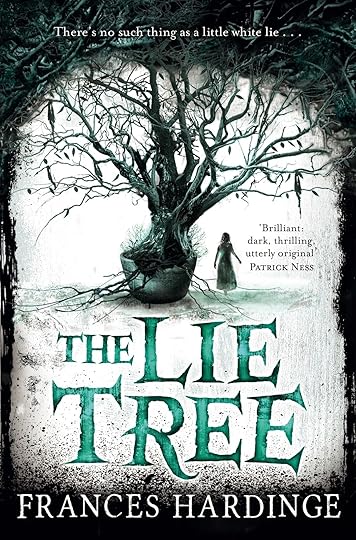
Which bit of your writing are you most proud of?
The short answer is, "the easiest parts and the hardest parts".Some chapters simply fell into place as I was writing them, so I still have a sneaking fondness for them. I had this experience with chapters "E for Extortion" in Fly by Night, "Thief of Threads" in Gullstruck Island and "Saint Yacobray, the Rider of the Horse of Bone" in Twilight Robbery.
Then there are the sections that I wrestled with for ages, pouring time into spider diagrams and brainstorming documents, and beating my head against dead ends where the plot almost worked but had small, fatal flaws. For example, in Twilight Robbery, there is a tangle of duplicities that can best be described as a 'quadruple cross'. Plotting this out so that each of the colliding schemes was plausibly practical took a surprising amount of time, and I'm still happy that I got it to work!
If you could be any character from one of your books who would it be and why?
There are days when I would like to be Saracen, the homicidal goose. He lives in a straightforward world where all obstacles are surmountable/breakable, even the annoying, tall, loud, bipedal ones.Saracen seems to be the most popular character I've ever created, so I suspect others feel the same way.
Who are you currently reading? Who would you recommend us reading?
At the moment I am reading Tom Pollock's Skyscraper Throne trilogy. It's London-based YA urban fantasy with a lot of freshness and verve. I've just finished the second book, and I'm about to start the third. As for my current recommendations, those are very much coloured by the fact that I've just been helping out as one of the judges of the Kitschies Awards. Frankly, I think that all the novels on the Red and Golden Tentacle shortlists were pretty amazing.
In one sentence what is your best piece of advice for new writers?
Be stubborn.
Published on March 19, 2015 02:31
March 16, 2015
Far Horizons - Call for submissions

Far Horizons turns 1 year old in April & we want you to help us celebrate by submitting a story. Far Horizons started as a way for self-pub, non-pub & thinly published writers to get their stories a readership. We seldom turn stories down, rather working with the writer (sometimes over a couple of months) to turn their work into something publishable. We run book extracts of self-published books and we are happy to take reprints, book reviews, film reviews, essays and interviews too.
If you are published in the pages of the magazine we are also happy to run an advert for your work.
So get scribbling - we want art and fiction and non-fiction for our celebration issue. We want a bumper issue!
Please send us your art and words at BRSBKBLOG at GMAIL dot COM by the 1st April to get into our April issue. If you miss the April deadline still send us a submission as we do publish monthly! Our submission guidelines below. The April issue is a special issue so shorts up to 4000 will be considered. If you have a longer story we do occasionally split them across issues so worth querying us.
If you've come across this blog post in your travels please do share it far and wide.
**Submission Guidelines**
We accept
*Fast Fiction (500-1200 words)
*Short Stories (!200-2500 MAX)
*Special issue shorts (4000 max)
* Novel extracts (5,000 max)
*Poems
*Artwork
Submissions should follow basic formatting:
Times New Roman 12 point font
Indent of 1.25
Standard paragraphing (New paragraphs for dialogue)
UK English spelling is preferred
Please take note. We are looking for as many subs for April as possible. We can't pay you but if we publish your words we will add art and we will run an advert for you for free to publicise any book, your writing platform or you. Reprints are fine. Novel extracts are fine. If we publish your art we will similarly also post an advert for your work.
Published on March 16, 2015 05:54
Let me tell you a story Jack
So last week I finally got round to going to "Let me tell you a story Jack" at the Crofter's Rights in Stokes Croft (a pub I last went to around 15 years ago!)
https://letmetellyouastoryjack.wordpress.com/2015/02/26/11th-march-lies-scandal-and-deceit/
I was reading, a short entitled "I, Butler" and very short "Not Alone" (last performed at NFFD).
There's a picture of me performing it over here - https://girlinbristol.wordpress.com/2015/03/13/let-me-tell-you-a-story-jack-the-crofters-rights/
Really liked the format of having Will singing songs and the "Lies & Deceit" post-it notes livening up things in-between the readings.
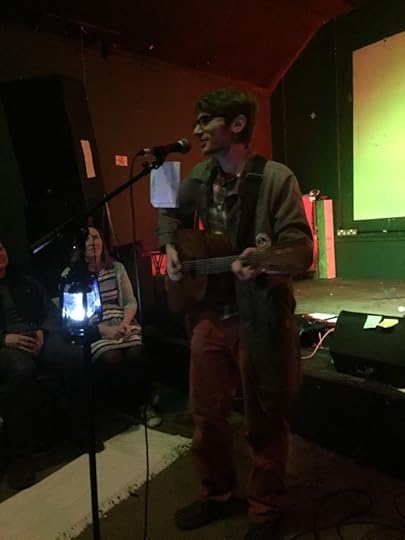
Most of the stories were light-hearted so perhaps my dark tales didn't really gel with the tone of the evening, but it was nice to perform something new.
Shonette and Tom Parker both told true stories which is impressive - I'd ramble without notes!
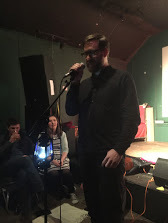
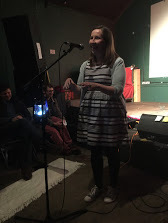
Kevlin Henney read his very entertaining "So you think you can cook?"
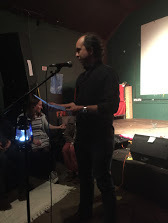
Other notable performances were by Christie Cluett
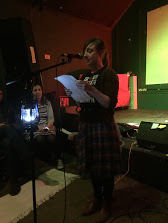
Mark Rutterford (with nice Kazoo work)
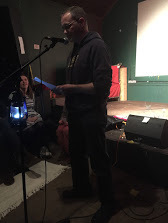
and Nathan Williams
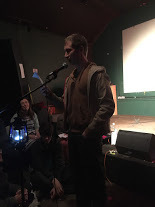
Will also displayed a Simon Munnery level of headwear to demonstrate how lies work.
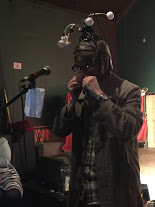
Congrats to the medal winners. I'll definitely try and get back there next time & hope to see you there!
https://letmetellyouastoryjack.wordpress.com/2015/02/26/11th-march-lies-scandal-and-deceit/
I was reading, a short entitled "I, Butler" and very short "Not Alone" (last performed at NFFD).
There's a picture of me performing it over here - https://girlinbristol.wordpress.com/2015/03/13/let-me-tell-you-a-story-jack-the-crofters-rights/
Really liked the format of having Will singing songs and the "Lies & Deceit" post-it notes livening up things in-between the readings.

Most of the stories were light-hearted so perhaps my dark tales didn't really gel with the tone of the evening, but it was nice to perform something new.
Shonette and Tom Parker both told true stories which is impressive - I'd ramble without notes!


Kevlin Henney read his very entertaining "So you think you can cook?"

Other notable performances were by Christie Cluett

Mark Rutterford (with nice Kazoo work)

and Nathan Williams

Will also displayed a Simon Munnery level of headwear to demonstrate how lies work.

Congrats to the medal winners. I'll definitely try and get back there next time & hope to see you there!
Published on March 16, 2015 04:22
Guest Post - John Forelli
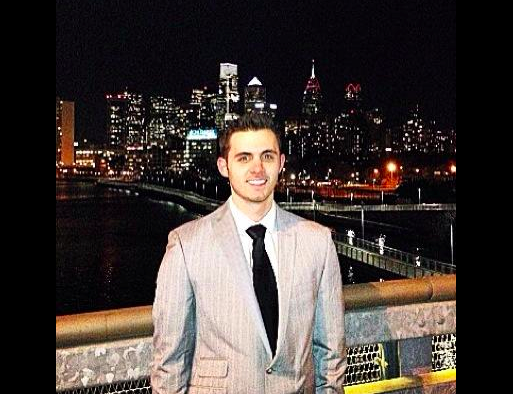
John Forelli is 24 years old and lives in Philadelphia. He worked a stuffy corporate job out of college before quitting to write this novel. He enjoys drinking with friends at Fado and Tavern on Broad in Philly and boring them with existential ramblings. John's ideal day would be spent eating pizza and watching Game of Thrones down the Jersey Shore. Find out more at his website www.johnforelli.com/ and find him on Twitter @JOHNFORELLI"
http://www.amazon.com/Simulations-John-Forelli/dp/1508429332
John has dropped in to talk about simulations
We've all asked ourselves the question before: “is this really happening?” We ask it after something bad happens—a death in the family, a car accident, a 'D' on the midterm you studied super hard for. We ask it after something good happens too—graduating high school, your favorite team winning the championship, running into an old friend you haven't seen in years. “Is this really happening?”
It's a common question—THE question—running through the history of human thought. Plato asked it with his allegory of The Cave. Descartes asked it when he wrote “cogito ergo sum.” Neo asked it in The Matrix when he chose the red pill. Leo DiCaprio asked it in Inception each time he spun that top. I'm asking it right now as I type this sentence. “Is this really happening?” I ask it in my novel, The Simulations where a shy man uses computer simulations to figure out how to win over the cute receptionist he likes.
The answer is that there is no answer.

We humans are blessed with the five senses of touch, taste, smell, hearing, and seeing. They are the conduits to everything around us. They are the building blocks with which we construct reality.
We're also blessed with the miracle of consciousness—the ability to form memories and conceive of ourselves as abstract beings within that reality.
All of this—all taste, touch, smell, hearing, seeing, and thinking happens inside our minds. We are imprisoned by this, because “reality” is constructed inside our minds, and those same minds are what we use question it. We can never be certain that reality is what it seems because the same tool that constructs reality for us is the one that asks THE question. We can't ask or answer a question we can't be sure exists in the first place.
Our perception of reality is like watching a live film of the projector that's projecting the film. It's a tautology we can't escape because we're trapped in the movie theater of our own minds.
Descartes thought that by questioning his own existence, he proved his own existence. I think that he was questioning the existence of his own question.
Did Descartes really exist? Did his question? Does mine?
Is this really happening? Did I really publish this novel?
There's no way to know for certain. But if you're going to be caught in an endless loop of questioning your own existence, might as well read a book about it.
Published on March 16, 2015 02:01
March 7, 2015
Call for submissions
[image error]
What if it was accepted that there really were ghosts? That mediums could actually talk to the dead. That your dearly departed continued to exist on a spiritual plane adjacent to ours and that at certain places, or in certain people they could manifest? What if those that disbelieved, that advanced a scientific explanation, are the kooks, freaks and loonies? What if neither model of reality were actually true and there was a third group, of conspiracy theorists, that were right?But which conspiracy? Is it aliens? Are the government spiking the water supply with experimental drugs? Are the military testing new subsonic weapons?Someone, somewhere knows the truth.This is the set up for Sick City Syndrome -my second novel & if you're a writer I want your help. So I'm asking for submissions.
Lauren Beukes got her writer friends to write blog posts, news articles and the like for one of her books to help with the worldbuilding and that's what I'm looking for.
I'd like news reports, blog posts, twitter conversations, other social networking, TV, radio, internet, academic article abstracts etc The novel will be set in the modern day, in "the City" (which will be closely modelled on Bristol of course) but there's no reason the articles need to be set in the modern day.
I'd like a mix from all three viewpoints, choose one and give me a maximum of 750 words.
If I use your piece (in any way - Some will be published on this website - http://petewsutton.com/sick-city-synd..., some will go in the book itself) you will be credited and I'll pay you 5p/word (upon publication)
Send your pieces to BRSBKBLOG (at) Gmail.com by the 1st of June 2015.
What if it was accepted that there really were ghosts? That mediums could actually talk to the dead. That your dearly departed continued to exist on a spiritual plane adjacent to ours and that at certain places, or in certain people they could manifest? What if those that disbelieved, that advanced a scientific explanation, are the kooks, freaks and loonies? What if neither model of reality were actually true and there was a third group, of conspiracy theorists, that were right?But which conspiracy? Is it aliens? Are the government spiking the water supply with experimental drugs? Are the military testing new subsonic weapons?Someone, somewhere knows the truth.This is the set up for Sick City Syndrome -my second novel & if you're a writer I want your help. So I'm asking for submissions.
Lauren Beukes got her writer friends to write blog posts, news articles and the like for one of her books to help with the worldbuilding and that's what I'm looking for.
I'd like news reports, blog posts, twitter conversations, other social networking, TV, radio, internet, academic article abstracts etc The novel will be set in the modern day, in "the City" (which will be closely modelled on Bristol of course) but there's no reason the articles need to be set in the modern day.
I'd like a mix from all three viewpoints, choose one and give me a maximum of 750 words.
If I use your piece (in any way - Some will be published on this website - http://petewsutton.com/sick-city-synd..., some will go in the book itself) you will be credited and I'll pay you 5p/word (upon publication)
Send your pieces to BRSBKBLOG (at) Gmail.com by the 1st of June 2015.
Published on March 07, 2015 08:22
Pete Sutton's Blog
- Pete Sutton's profile
- 14 followers
Pete Sutton isn't a Goodreads Author
(yet),
but they
do have a blog,
so here are some recent posts imported from
their feed.



